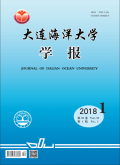摘要:为优化生物完整性指数,建立河流健康状况评价的合理方法,基于渭河60个点位的物理特征、化学特征和着生藻类群落特征,进行渭河生态系统完整性评价体系(Index of ecosystem integrity,IEI)的构建并评价其生态系统完整性状况;河流IEI评价体系3个部分(生态系统物理完整性、化学完整性、着生藻类生物完整性)各成一套体系,筛选出核心指标,采用比值法、分位数法得出各点位健康评价结果;同时对各点位进行了生物完整性(Index of biological integrity of periphytype,P-IBI)评价和基于《地表水环境质量标准》的水质评价,用于验证IEI指数的科学性和准确性。结果表明:IEI评价显示,渭河有健康点位6个,较好点位4个,一般点位9个,较差点位41个;经对比,IEI分别与P-IBI、水质评价具有极显著相关性(P<0.01),P-IBI与IEI评价结果完全相同和只差一个等级的点位有58个,占96.67%,此两种评价结果有差异的点位表现为IEI完善了P-IBI评价结果,符合生态系统的健康状况(W18、W37),而水质评价与IEI评价结果完全相同的点位共29个,占48.33%,评价等级相差3个等级和2个等级的点位共有14个,两者占23.33%,部分点位(L2、J1)IEI弥补了水质评价的不足。研究表明,IEI可以完善并改进P-IBI、水质评价评价结果,可作为河流健康状况评价的一种新方法,可在其他河流健康评价中进行推广应用。

